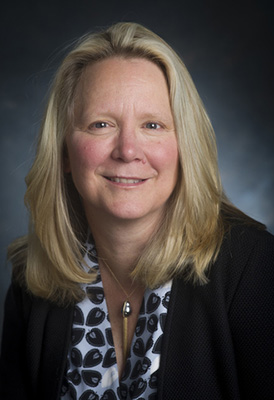 UAB is a stronghold at finding patients for studies, but healthy controls were harder.The Healthy Donor Cohort at the University of Alabama at Birmingham was formed last year to solve a problem — finding healthy participants who would donate a small amount of blood for clinical studies.
UAB is a stronghold at finding patients for studies, but healthy controls were harder.The Healthy Donor Cohort at the University of Alabama at Birmingham was formed last year to solve a problem — finding healthy participants who would donate a small amount of blood for clinical studies.
The HDC has proved its mettle since then with 1,066 preregistered volunteers who respond in two days or less to blood requests. Now this cohort, ages 18 to 86, is starting to serve the UAB research community more broadly, says Fran Lund, Ph.D., director of the UAB Immunology Institute, which runs the HDC.
“We have a bunch of groups that don’t need blood from a healthy donor,” Lund said. “What they need is access to a large group of people who are willing to participate in research.”
The HDC sends out research descriptions to the large cohort of people who are generally healthy. The large cohort reads the description and, if interested, contacts the research study to see if they meet the requirements for enrollment.
“For example, there might be a researcher looking for people who are on high blood pressure medication,” Lund said. “They send their description to our cohort, and volunteers who fit the requirements — such as age, sex, particular medications — reach out to the study to enroll or not. If enrolled, they do whatever that research study is doing, which may have nothing to do with blood collection. It’s a fast way for researchers to reach more than 1,000 people to see if any of them might be interested. We are filling other research studies that may not need to collect blood, and we are filling those studies very quickly.”
The success of the HDC in just one year has been shown by its blood donations. Seventeen-plus UAB research teams have found hundreds of interested participants willing to donate a small amount of blood. An additional 10 UAB clinical research studies have utilized HDC services to meet their personal enrollment goals — with almost immediate responses. One study found its participants in just six hours; eight were found in 24 hours or less. The 10th, the slowpoke of the bunch, took two days.
“I have done it the old-fashioned way,” said Lund, recalling the days of posting sheets of paper with tiny tear-off tabs cut on the bottom bearing the phone number of the lab. “This is much, much faster.”
 Fran Lund, Ph.D.UAB researchers who found healthy blood volunteers could not agree more.
Fran Lund, Ph.D.UAB researchers who found healthy blood volunteers could not agree more.
“The HDC gets a 20 out of 10, if that is possible,” said Lyse Norian, Ph.D., associate professor in the Department of Nutrition Science in the UAB School of Health Professions. “We are so delighted with the HDC team and the support they are providing to our research. This is an amazing and easy-to-use resource for UAB researchers.”
“Game-changing,” wrote Tony Merriman, Ph.D., professor in the UAB Department of Medicine.
“Volunteers were found immediately,” said Rachel Guenter, Ph.D., assistant professor in UAB’s Department of Surgery, who manages one of three labs collaborating in a hunt for a novel blood marker for types of cancer. “I was able to receive the donor samples faster than I could receive the kit we used to analyze them.”
Guenter and colleagues were doing preliminary research to show the need for an in-depth study. The HDC blood samples helped establish a baseline blood level of the soluble protein calreticulin in healthy people, allowing further studies to test calreticulin as a cancer biomarker. “It is imperative to know if healthy patients have detectable calreticulin in their blood, and if yes, what is the concentration of circulating calreticulin,” Guenter said.
Aided by HDC blood, the three labs, run by J. Bart Rose, M.D., Department of Surgery, Benjamin Larimer, Ph.D., Department of Radiology, and Michael Niederweis, Ph.D., Department of Microbiology, this month received a $160,000 grant from the Breast Cancer Research Foundation of Alabama for the study “Validation and rapid detection of calreticulin as a cancer biomarker.”
 Lorenzo Thompson, M.D.The HDC wants this success to grow as more UAB researchers learn about this helpful tool, say Lund and Lorenzo Thompson, M.D., the institute’s clinical research administrative manager. They want to increase the cohort of healthy donors to 5,000 people who continue to reflect the population of Alabama. “When building the HDC, one of our priorities was offering a quality service. We wanted UAB labs utilizing HDC services to receive the requested number of samples on their preferred date. While any research study working with human participants can struggle with no-shows, cancellations and so forth, the accessibility and number of our cohort from various backgrounds has allowed us to build a service that’s 100 percent reliable. This allows UAB labs to properly plan their experiments knowing they can count on the HDC to deliver results,” Thompson said.
Lorenzo Thompson, M.D.The HDC wants this success to grow as more UAB researchers learn about this helpful tool, say Lund and Lorenzo Thompson, M.D., the institute’s clinical research administrative manager. They want to increase the cohort of healthy donors to 5,000 people who continue to reflect the population of Alabama. “When building the HDC, one of our priorities was offering a quality service. We wanted UAB labs utilizing HDC services to receive the requested number of samples on their preferred date. While any research study working with human participants can struggle with no-shows, cancellations and so forth, the accessibility and number of our cohort from various backgrounds has allowed us to build a service that’s 100 percent reliable. This allows UAB labs to properly plan their experiments knowing they can count on the HDC to deliver results,” Thompson said.
P.J. Utz, M.D., a professor of medicine at Stanford University, learned about the program when he attended a meeting of the Immunology Institute’s Scientific Advisory Board in February.
“The Healthy Donor Cohort was incredibly impressive,” Utz said. “Built quickly, nimbly and efficiently. Based on seeing how terrific this was, I approached Fran and Lorenzo and asked for help in building something similar here at Stanford. Many, many projects have great disease samples, but they lack healthy control samples. UAB’s approach solves this problem.”
Many at Stanford, he explains, perform mechanistic studies on disease samples, designed to understand molecular mechanisms, discover biomarkers or explain heterogeneity. “Critical to success is a cohort of comparators who do not have the disease, serving as controls,” Utz said. “This problem is so common as to affect probably 80 percent or more of all studies, and nearly all of the studies with which my lab is involved.”
As Lund said when the HDC was launched in early 2024, “The great thing about UAB is, if you want to study a cohort of patients, we are a stronghold to find a clinician researcher to ask patients to participate. Where we failed was getting healthy controls, matched for sex, age and so forth.”
UAB investigators can learn more about the Healthy Donor Cohort here. Additionally, those interested in joining the UAB HDC as a study participant, or investigators who have additional questions on how to have research advertised by the UAB HDC or how to start collecting HDC blood samples, may contact HDC study manager Lorenzo Thompson at
At UAB, the Immunology Institute and the departments of Surgery, Radiology, Medicine and Microbiology are part of the Marnix E. Heersink School of Medicine. Nutrition Sciences is a department in the UAB School of Health Professions.
Editor's note: This article has been updated with current enrollment figures as of Oct. 20, 2025.